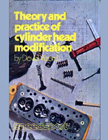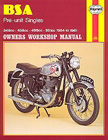|
|
 |
Sprung Vs. Unsprung Weight
Definitions
“Unsprung weight” moves when the wheel moves.
“Sprung weight” moves when the chassis moves.
Weight controlled by the suspension, and usually below the suspension, which forces it into contact with the road surface or other components, is unsprung weight.
Weight supported by the suspension, and usually above the suspension, which separates and isolates it from the road surface and other components, is sprung weight.
There appears to be some confusion concerning the definition and behavior of rotating weight. Many advantages that apply solely to reduction of rotating weight have been erroneously applied to reduction of unsprung weight. Among these are the concept that there is a ratio or formula that predicts a greater effect on the acceleration of a vehicle if weight is removed than the actual weight change; there is no single accurate formula (although some rough predictions provide useful information through a combination of generalities), and it does not apply to unsprung weight in any case. There are components on all vehicles that are both rotating weight and unsprung weight, but the effects are frequently, and improperly, combined and attributed to unsprung weight.
Effects
Unsprung vs. sprung weight have no difference in their effect on acceleration or top speed. There is no “1-10” rule (or any other ratio) where 1 lb. removed from unsprung weight “has the same same effect as” a higher amount of sprung weight. Any benefit from weight reduction towards increased MPH or reduced ET will be exactly the same as if the weight were removed from the chassis. Weight removed from an unsprung component, such as a rear wheel or axle housing, may affect traction if the wheel is not under control during launch.
Lighter wheels & tires do have a very small additional benefit due to the lower amount of power required to rotate them (true of all rotating components), but this is not due to their classification as unsprung weight.
The unsprung vs. sprung weight percentage greatly affects wheel control, but its importance is almost entirely limited to un-even surfaces, or conditions where the attitude of the vehicle changes (such as through G forces). This is most important in off-road and pavement road racing, somewhat less important in dirt track, and has almost no value in drag racing. As the importance of suspension travel for proper wheel control diminishes, the value of reducing the unsprung proportion of the total car weight is lessened, and becomes zero if the suspension travel is zero.
Cars requiring precise control of wheel movement, where a low percentage of unsprung weight is an advantage, will have faster lap times and higher top speeds, not because unsprung weight reduction improves acceleration or top speed, but because traction is improved.
The unsprung vs. sprung weight percentage also affects ride comfort, since lighter springs are needed to maintain traction and control with lighter unsprung components (alloy wheels, independent rear suspension, alloy calipers, composite springs, in-board brakes, etc.), the chassis is less disturbed by wheel movement and road surface irregularities.
Unsprung Weight
Here are some examples of “pure” unsprung weight on a typical front-engine rear-drive sedan:
» Brake rotors or drums + shoes, wheel cylinders, backing plates, calipers, pads, caliper brackets, flex hoses, return
springs, wheel bearings, etc.
» Wheels, tires, tubes & valves
» Steering knuckles
» Rear axle housing, ring & pinion, differential, axles, etc.
» Pinion snubber
» Sway bar linkage (but not the arms or center beam)
Sprung Weight
Almost all of the remainder of the car is sprung weight, including some components that move, oscillate, reciprocate and/or rotate, including the motor and transmission, since their movement is still supported by the suspension which isolates them from the road surface.
Hybrid Weight
On some of the remaining components the definition is not so straight-forward. Parts that are attached to the chassis and the wheels are “hybrid” (mixed): both sprung and unsprung. It's generally considered that the weight split is 50/50, but the actual separation is based on the centerline from the pivot point (not the location of the center of gravity). For example: the outer (ball joint) end of a control arm is unsprung, but much lighter than the inner (chassis) sprung end.
For a more extreme example, imagine a driveshaft 60” long, with a tiny U-joint on a 30” aluminum tube in front, mated to a ½” wall thickness 30” long steel tube with a huge U-joint in back. If the 50/50 rule applied, ½ of the total weight would be sprung (on the transmission end), and ½ of the total weight would be unsprung (on the axle end), based on a separation point located at the center of gravity.
This is an incorrect and misleading oversimpification, because the first 1” of the weight of the transmission end moves the same amount as the chassis, the next inch moves less, etc. and the final 1” of weight just before the rear axle hardly follows chassis movement at all - it’s tracking the unsprung rear axle movement. The balance of chassis-to-axle (sprung-to-unsprung) movement percentage doesn't have anything to do with the weight - it's based on a separation point located at the geometric center (30” in this case), where a molecule follows 50% of the chassis’s motion and 50% of the axle’s.
Clearly, splitting the motion based on weight will predict that this particular driveshaft is almost all unsprung weight (because the heavier components are in the back), even though ½ of it isn't.
Some examples of parts fitting in the “hybrid” category, including some non-Mopar:
» Upper control arm (front or rear)
» Lower control arm (front or rear)
» Shock absorber
» Sway bar arms (but not the linkage or center beam)
» Leaf spring
» Coil spring
» Ladder bar
» Trailing arm
» Panhard bar
» Watts linkage
» Drive-shaft |

|







